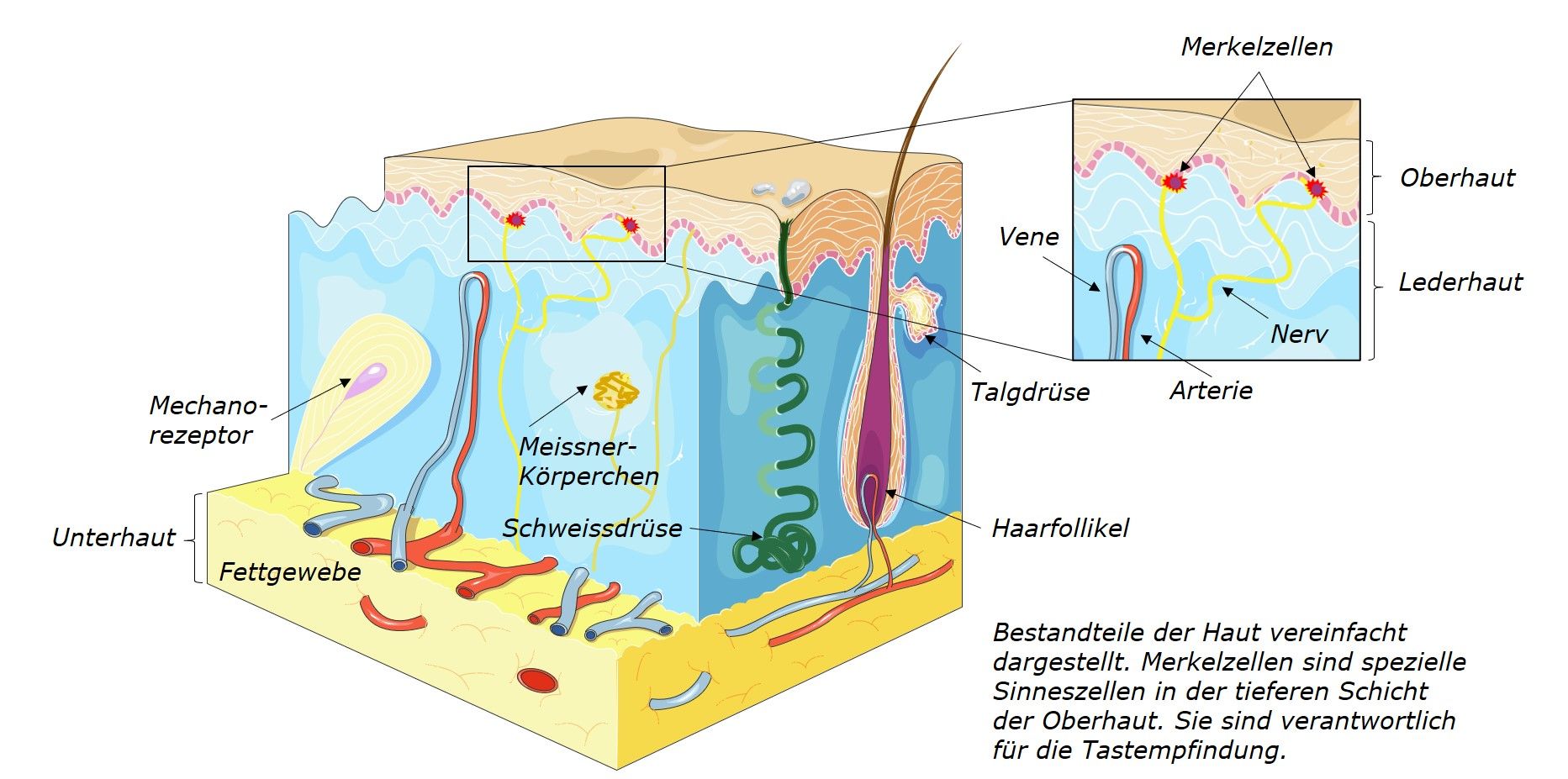What is Merkel cell carcinoma?
The name Merkel cell carcinoma comes from the similarity of the cancer cells to Merkel cells in the skin. Merkel cells are located individually or in groups in the epidermis, the outer of the three layers of our skin, and play a role in the sense of touch.

Merkel cell carcinoma – Merck (Schweiz) AG patient brochure; image adapted from Servier Medical Art, Creative Commons License
How common is Merkel cell carcinoma?
Every year, around two to four people per 1 million inhabitants in Europe are diagnosed with Merkel cell carcinoma. This means that Merkel cell carcinoma is 30 times rarer than melanoma.
Why is Merkel cell carcinoma referred to as aggressive skin cancer?
Merkel cell carcinomas grow quickly and spread rapidly. One third of patients already suffer from metastases in the regional lymph nodes when they are first diagnosed. If the disease is not treated in time, it is fatal in around a third of those affected and is therefore three times more dangerous than melanoma.
Causes
Merkel cell carcinoma usually develops on sun-exposed skin (e.g. head, neck, more rarely arms and legs) as a painless, firm lump, which can be red-violet or skin-colored. However, Merkel cell carcinoma can also develop less frequently in sun-protected areas such as the buttocks or scalp.
What are the causes of Merkel cell carcinoma?
The development of Merkel cell carcinoma can have various causes. The exact influence of the various factors has not yet been conclusively researched.
“Merkel cell polyomavirus”
The “Merkel cell polyomavirus” is a human virus that is detectable in around 80 percent of all Merkel cell tumors. A large proportion of the population has already come into contact with this virus by the age of 20. However, it is still unclear when and under what circumstances an infection with the Merkel cell polyoma virus leads to the development of Merkel cell carcinoma. The virus is not detectable in the remaining 20 percent of all Merkel cell carcinomas. This suggests that the virus or its continuous presence is not responsible for all cases of Merkel cell carcinoma. In addition, most people carry polyomaviruses throughout their lives without ever developing Merkel cell carcinoma. These observations could be explained by the fact that after infection with the polyomavirus, other factors such as UV exposure or impairment of the immune system are necessary to stimulate cancer development.
Impaired function of the immune system
Impaired immune system function (immune suppression) and the development of Merkel cell carcinoma are closely linked: People whose immune system is impaired in the long term have an up to 15-fold increased risk of developing Merkel cell carcinoma. This includes patients with haematological diseases (e.g. leukaemia) or people who have received an organ transplant and have to take immunosuppressant medication.
Ultraviolet radiation (sun, solarium)
The scientific data also indicates a strong link between Merkel cell carcinoma and ultraviolet radiation. UV exposure poses a double danger: It damages the skin and increases the risk of skin cancer. It also suppresses the immune system, limiting its ability to repair skin damage and fight skin cancers and other diseases.
